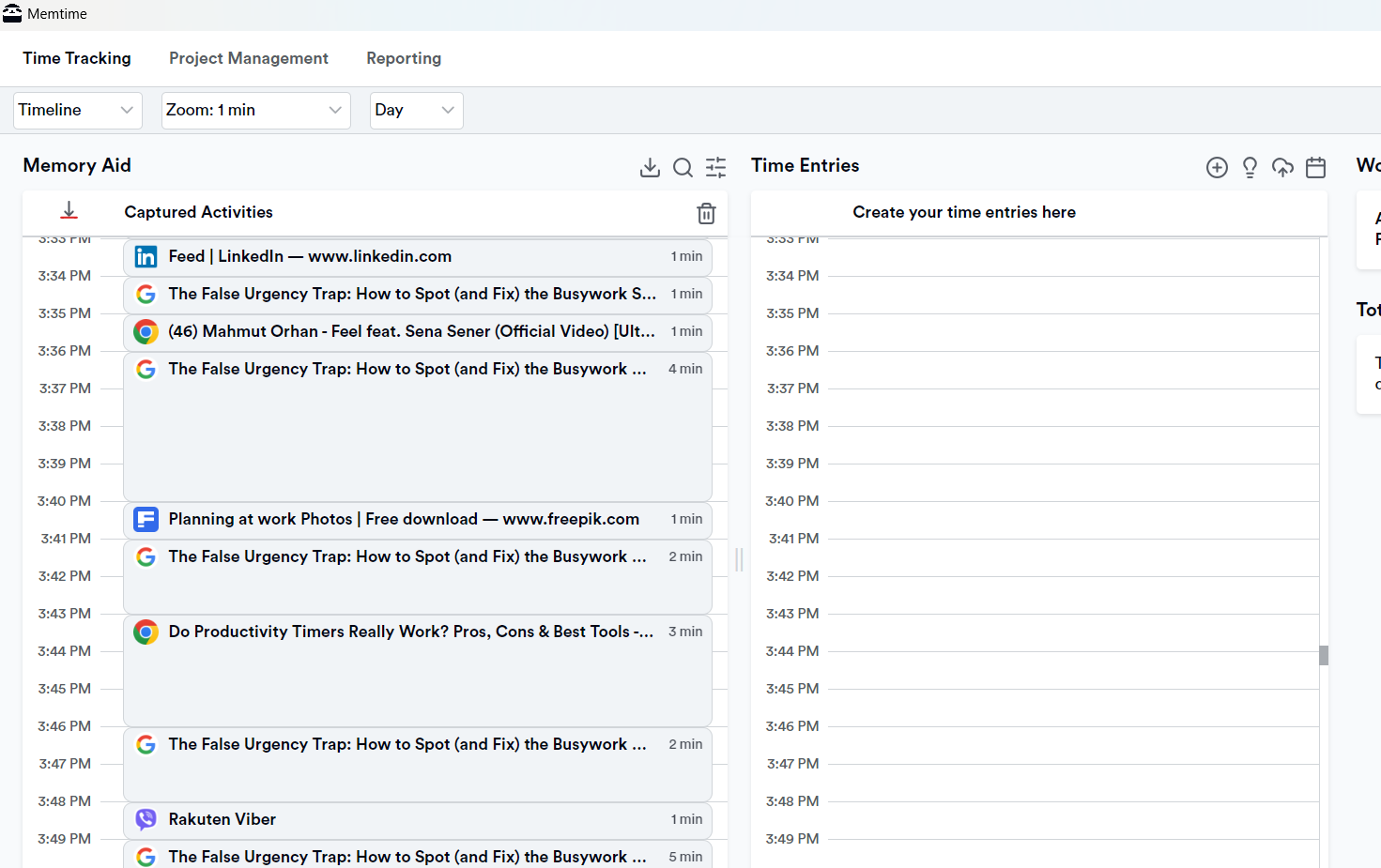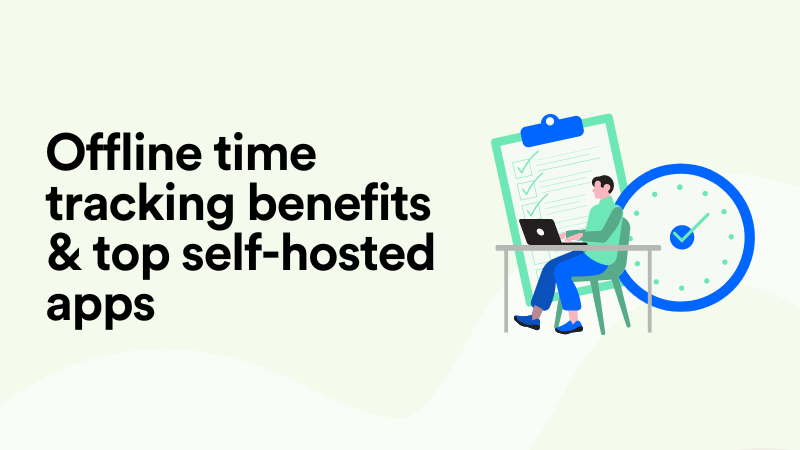The False Urgency Trap: How to Spot (and Fix) the Busywork Slowing You Down

Are you guilty of falling into a false urgency trap? Dunno? Not sure?
Let me share this with you. If you’re drowning in Slack pings, juggling 47 tabs, and responding to anything but urgent emails flagged by people who don’t know what a real emergency is, you, my friend, are in the False Urgency land. The land where critical work disappears and to-do lists go to die (buried under a pile of surprise, 1-hour-long meetings).
Why am I calling you out like this?
Well, because it’s time we call out busywork for what it really is: a productivity cosplay.
And you can break this low-productivity cycle, stop glorifying the hustle of hamster-wheeling, and start getting things done.
In this article, you’ll learn how to spot false urgency for what it is and, more importantly, how to beat it before you burn out.
Here’s what you can do to escape the urgency illusion.

What is false urgency?
False urgency is just what it sounds: a constant, nagging insistence that everything is critical, everything is on fire, and everything must be done RIGHT NOW. And when everything is urgent, nothing truly is. 🤷
You can consider false urgency a byproduct of bad management or anxious clients. When inboxes are overflowing, Slack channels never stop pinging, and deadlines are somehow always yesterday, managers tend to think they’re on the right track. In reality, false urgency is a productivity trap because it keeps teams in constant motion without any meaningful progress. They burn energy on tasks that feel important but most likely aren’t.
Where did it come from?
False urgency has roots in healthy workplace habits that somehow got twisted and turned toxic:
- The need for efficiency. Technology has made our communication instant, and that’s why we assume work should be, too. If you can fall into the trap of “fast reply”, you are one step away from thinking “fast results” are the goals. Just because someone can ping you instantly doesn’t mean the task they’re asking for deserves your immediate attention.
- The lack of prioritization skills. If you don’t know how to prioritize, it creates a vacuum where all your work defaults to “high priority”. And that’s no surprise; it’s easier to label a task “urgent” than to do the hard work of actually assessing its impact or importance.
- The hustle culture. We’ve all glamorized busyness. There’s pressure to be always on, responsive, and hussling. In many companies, the person who appears to be the busiest is often seen as the most valuable.
- Improper leadership. Some managers create urgency by making last-minute decisions, shifting priorities mid-work, or reacting emotionally to client requests. Their teams then inherit the chaos and treat every word from them as a fire alarm.
- No clear ownership. When nobody owns the task, everyone feels responsible. That shared anxiety is how urgency starts, just so the task gets off someone’s plate.
- Poor planning habits. When teams don’t plan ahead (or underscope the effort), urgency is what they turn to. “We didn’t think this through” becomes “This is a top priority now!”, which creates a panic mode cross-team.
How to spot false urgency
False urgency can often be sneaky; it wears the costume of productivity but leaves you in a cycle of context switching, constant stress, and unfinished work.
The trick to reclaiming your time (and productivity) is learning to spot it before it takes over your day.
Here’s how to recognize the signs of false urgency, plus quick, practical strategies to handle each one with clarity and confidence.
#1 Every message you get is more urgent than the last one
If your inbox or Slack is full of messages marked URGENT, but the content isn’t really there, you have entered the false urgency chat.
Messages like, “Can you quickly edit that logo?” or “Please do a quick update on this doc, NOW” is how it usually starts.

#2 You find yourself constantly context switching
“Hey, just a quick question?”
“Got a sec?”
“Can you hop on a call real fast?”
These highly annoying, interruptive messages are anything but good for your focus. You shouldn’t be pulled to multiple sides, juggling half-finished thoughts while trying to do actual, meaningful work. These tiny distractions stack up and leave you busy but weirdly unproductive by day’s end.
#3 New deadlines appear every minute or so
A classic false urgency trap occurs when you are faced with surprise projects or “quick turnarounds” that have unrealistic goals and due dates.
“The client wants this by EOD.”
“We just found out the board needs this deck by tomorrow.”
And the worst part is that you don’t know why it’s urgent, who made it urgent, or what success on that task looks like.
#4 Every meeting is a mini-emergency
Daily stand-ups or check-ins that just seem like problem-dumping and not problem-solving are often a sign your team is just reacting, not doing.
“We’re behind on this!” is not a sentence you want to hear every meeting.

#5 “You can do it; it’ll take you just 5 minutes”
If you’re regularly faced with tasks someone (your manager) claims will “only take a few minutes”, you need to start looking at your watch and calendar.
False urgency is all about the underestimation of time and effort. One innocent request usually turns into an hour-long rabbit hole, messing up your priorities and focus.
#6 You get tasks with vague scopes
False urgency is all about vagueness. Ambiguity. The less clear a task or project is, the more people try to compensate with speed, urging you to act fast.
If you often get requests with no brief and a close deadline and projects that feel like a reaction, not a well-thought-out decision, you are falling for a false urgency trap.
How to beat the false urgency trap
Now that you know how to spot false urgency and how to set boundaries when it happens (by asking the right questions and protecting your focus), all you need is one solution that can actually prevent it.
Because the previously mentioned day-to-day moves act like bandaids, they help you handle false urgency when it pops up but don’t teach you how to avoid all that chaos.
You and I both know you will still be faced with random requests, Slack pings, and way-too-long, unproductive meetings.
The only way out of it is with time tracking.
Not in the form of micromanagement. But as data. As your proof of clarity. Because it’s impossible to argue with data. 😏
Why time tracking works
I know, I know. Time tracking has a bad rap. It’s because most people (think managers and team leads) think it’s a surveillance method. They want a time tracking tool that breathes down their teams’ necks so they don’t have to.
In reality, time tracking apps are anything but that; they are tools that can help you discover your working habits and patterns, so you don’t have to consult your calendar, gut feeling, or dozens of post-its stuck to your screen.

In terms of false urgency, time tracking can help you answer these questions:
- Where is your time actually going?
- How many “quick asks” do you handle each workday?
- How much time do you spend on false urgent tasks? And how much does it cost you over a week?
- Are you underestimating your real work? Or perhaps you tend to overcommit and plan your work days around best-case scenarios.
And trust me, with just 2 weeks of tracked time, false urgency starts to lose its power because you are no longer reacting to it.
You have receipts that prove exactly where your time is going, how often you’re pulled off track, and which “tiny” interruptions are actually hour-long tasks. And no manager can argue with you; you don’t rely on a hunch but a bunch of data that shows what’s decreasing your productivity.
Here’s what time tracking can do to help you handle the false urgency trap:
#1 You won’t have to rely on how you feel
When you feel overwhelmed, you suspect that at least half of your work time is spent on low-value tasks and dumb emergencies (that are just busywork). But when you track your day, you get a precise review of your day.
Perhaps, you realize 65% of your day goes to managing other people’s requests. And that’s not just annoying; it’s a business problem that requires immediate attention and reaction.
Now imagine time tracking being implemented cross-team.
Your dev team is not exactly reaching their sprint goals. You assume there’s a scoping issue, but then you look at time data and realize everyone’s getting pulled into meetings and off-scope bug fixes. So, you can conclude that you don’t need a more detailed scope; you need to protect your team better.
Here’s what I’m trying to say: time tracking eliminates suspicions. You get insights and clarity. And once you have that, it becomes a lot easier to say “no” to those (non-)emergencies because you can back it up with evidence.
#2 You can set boundaries (without looking like a jerk)
If you are a closeted people pleaser who doesn’t know how to say “no” or “not now” to people at work, you need time tracking. Because with time tracking insights, you can confidently say “no” to your team lead, client, or colleague without being afraid you’ll sound like a diva.
Time tracking gives you all the confidence to push back. Just imagine yourself saying, “I’ve tracked my project time for the past 3 weeks, and 28% has gone to last-minute change requests. I think it’s time to formalize how these are scoped or define a separate budget and time for them”. Boom!
And that’s not whining; that’s called reporting. 👏
#3 You’ll make data-driven decisions
Ugh. Data-driven decisions are such an eye-roll-worthy buzzword. However, when it comes to combating false urgency, these decisions make the difference between working smart and working in a panicked state.
With time tracking insights, you can forecast workload based on reality, plan buffer time for “the unexpected” and budget time the way you’d budget money.
And when your clients ask, “Is there a way we can squeeze this in?”, you rely on data and give your honest “No”.

Meet Memtime, the antidote to the false urgency trap
You’ve identified the false urgency signs.
You’ve learned how to react to each.
You understand why time tracking is a necessity and how it can help you reclaim your focus.
Now comes the big question: how do you actually track your time?
Easily. With Memtime.
Why?
Because Memetime is not a time tracker per se. Think of it as a memory assistant: it works automatically in the background, quietly capturing everything you do across apps, calendars, meetings, emails, and documents and showing it to you in a clean, visual timeline.
Here’s why Memtime can help you beat the false urgency trap for good:
- There’s no more guesswork; you rely on memory, not estimates. When you remember everything you did (with Memtime), you get a full picture of your day, So when someone says, “Why can’t you complete this EOD?” you’ve got receipts in the form of a timeline. You are not making excuses for yourself but showing the real cost of context switching, surprise requests, and all that “invisible” work.
- Memtime works while you work. Traditional time trackers that come with timers rely on you to remember to track. Memtime runs passively in the background, capturing what tools you used, when, and for how long. You can be deep in Figma, writing code, answering client emails, or in meetings, it’s all logged for you.
- You get a visual timeline of your day. And once all your activity is captured, you can create time entries and assign them to tasks or projects (Memtime integrates with over 100 tools). Five minutes of your activity review is all it takes.

- You can fix unproductive habits. By showing you exactly where your time is spent (how much of it is reactive, scattered, or spent on surprise tasks), Memtime gives you the clarity you need to fix all the patterns that are not serving you.
If I were you, I’d use Memtime to:
- Spot false urgent tasks. Like that “quick content tweak” from marketing that turned into a full rewrite or a “5-minute design edit” that required 3 tools and a Slack thread? All tracked and logged.
- Identify which clients, meetings, or tools are messing up your focus. Just imagine the possibilities: you notice that your Monday check-ins result in 2 hours of reactive work with no clear outcomes, or you see that you actually spend bouncing between Notion, Google Docs, Slack, and Asana more than you expected. These insights are pure gold.
- Understand how much “quick” really costs. A teammate asks you for “a quick review”? Memtime shows that it costs you 22 minutes, plus another 15 minutes, to get back on your current task.
- Quantify work. Like the prep time before a client call or the 45 minutes lost every day to “just checking email real quick”.
- Give receipts (not excuses). Instead of saying, “I’ve been busy”, you can say, “I’ve spent 37% of my time this week on non-priority tasks. Here's what they were”.
So, to recap.
With Memtime, you get no timers, no stress, just insights that show you where your time goes.
If you want to give Memtime a shot, start with our 2-week free trial. You can create a Memtime account in less than 10 seconds to download and install the app.
Just click the button below to get started.
Wrapping it up
The point of this blog post was to remind you there’s no task urgent enough to put you into a panic mode. That urgent logo tweakment is probably not a national emergency.
False urgency is the workplace version of crying wolf, except the wolf is a Slack ping, and instead of villagers, you get meetings with your team that could have been an email.
Luckily for you, you’ve got Memtime, as a memory app that doesn’t forget what actually happened in your day (unlike your brain after 3 context switches).
With Memtime, you can’t even experience a microstress; you’ve got all the receipts. So, next time someone asks you for “just a 5-minute favor”, you can smile politely, check your Memtime, and say:
“Sure. That’ll cost approximately 43 minutes of context switching, move my top priority, and push today’s main goal to the Tomorrow list. When do you need it?”
Try Memtime for free. You know you want it. 😉
Aleksandra Doknic
Aleksandra Doknic is a copywriter and content writer with six years of experience in B2B SaaS and e-commerce marketing. She's a startup enthusiast specializing in topics ranging from technology and gaming to business and finance. Outside of work, Aleksandra can be found walking barefoot in nature, baking muffins, or jotting down poems.






